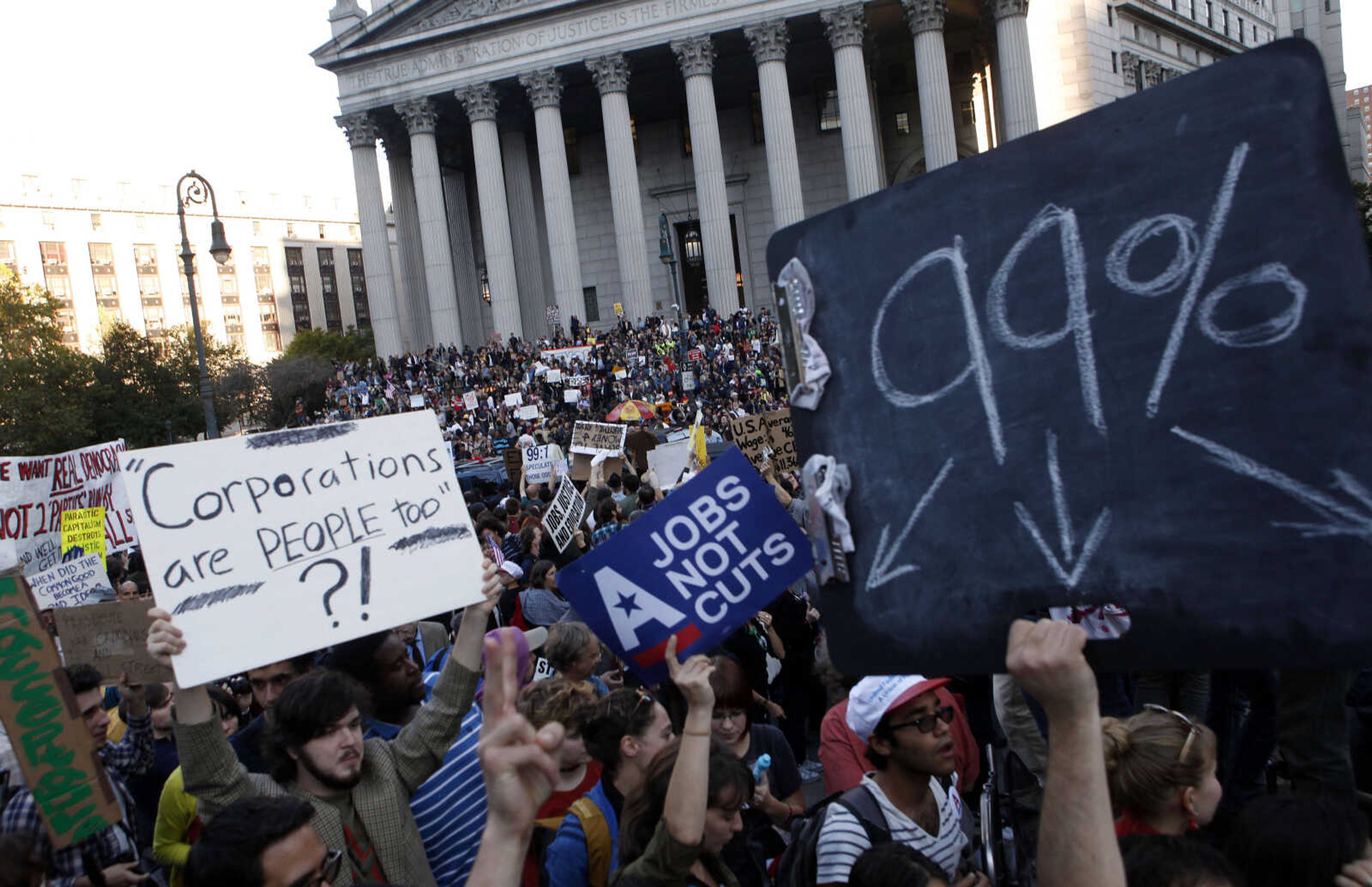Report: Richest 7% got richer during recovery
WASHINGTON -- The richest Americans got richer during the first two years of the economic recovery while average net worth declined for the other 93 percent of U.S. households, says a report released Tuesday. The upper 7 percent of households owned 63 percent of the nation's total household wealth in 2011, up from 56 percent in 2009, said the report from the Pew Research Center, which analyzed new Census Bureau data released last month....
WASHINGTON -- The richest Americans got richer during the first two years of the economic recovery while average net worth declined for the other 93 percent of U.S. households, says a report released Tuesday.
The upper 7 percent of households owned 63 percent of the nation's total household wealth in 2011, up from 56 percent in 2009, said the report from the Pew Research Center, which analyzed new Census Bureau data released last month.
The main reason for the widening wealth gap is that affluent households typically own stocks and other financial holdings that increased in value, while the less wealthy tend to have more of their assets in their homes, which haven't rebounded from the plunge in home values, the report said.
Tuesday's report is the latest to point up financial inequality that has been growing among Americans for decades, a development that helped fuel the Occupy Wall Street protests.
A September Census Bureau report on income found that the highest-earning 20 percent of households earned more than half of all income the previous year, the biggest share in records kept since 1967. A 2011 Congressional Budget Office report said incomes for the richest 1 percent soared 275 percent between 1979 and 2007 while increasing just under 40 percent for the middle 60 percent of Americans.
Other details of Tuesday's report:
- Overall, the wealth of American households rose by $5 trillion, or 14 percent, during the period to $40.2 trillion in 2011 from $35.2 trillion in 2009. Household wealth is the sum of all assets such as a home, car and stocks, minus the sum of all debts.
- The average net worth of households in the upper 7 percent of the wealth distribution rose by an estimated 28 percent, while that of households in the lower 93 percent dropped by 4 percent. That is, the mean wealth of the 8 million households in the more affluent group rose to an estimated $3.2 million from an estimated $2.5 million while that of the 111 million households in the less affluent group fell to roughly $134,000 from $140,000.
- The upper 7 percent were the households with a net worth above $836,033 and the 93 percent represented households whose worth was at or below that. Not all households among the 93 percent saw a decline in net worth, but the average amount declined for that group.
- On an individual household basis, the average wealth of households in the more affluent group was almost 24 times that of those in the less affluent group in 2011. At the start of the recovery in 2009, that ratio was less than 18 to 1.
- During the study period, Standard & Poor's 500 stock index rose by 34 percent, while the Standard & Poor's/Case-Shiller index for home prices fell by 5 percent.
Connect with the Southeast Missourian Newsroom:
For corrections to this story or other insights for the editor, click here. To submit a letter to the editor, click here. To learn about the Southeast Missourian’s AI Policy, click here.









